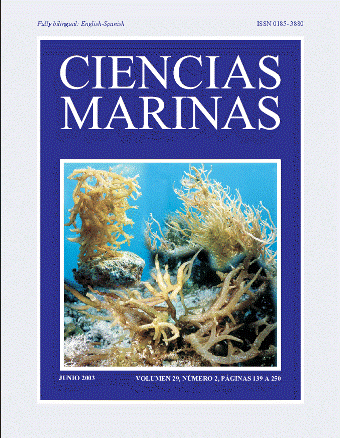Mitochondrial diversity and genetic structure in allopatric populations of the Pacific red snapper Lutjanus peru
Main Article Content
Abstract
We analyzed the genetic diversity and structure of three allopatric populations of the Pacific red snapper Lutjanus peru (Nichols and Murphy, 1922) by means of restriction fragment length polymorphisms of the entire mitochondrial control region (1350 bp). We found high levels of haplotype (h = 0.966) and nucleotide (π = 3.23%) diversities among the 100 organisms analyzed from Baja California Sur, Sinaloa and Jalisco (Mexico). Most of the molecular variability was detected with only one of the five restriction enzymes used (MseI). Heterogeneity analysis of haplotype frequencies was not significant (χ2 = 125.1, P > 0.25); neither were Wright's fixation index (FST = 0.0062, P = 0.140) nor its molecular analogue (ΦST = 0.0194, P = 0.056). An analysis of molecular variance (AMOVA) confirmed the absence of differentiation between peninsular and continental populations, even though it produced a marginally significant ΦST (ΦST = 0.0116, P = 0.048). No phylogeographic pattern was detected in a Neighbor-Joining gene tree. We argue that high molecular diversity levels are consistent with a large population size and that the absence of an apparent genetic structure, in the extreme north of the species distribution, suggests the action of mechanisms favoring passive larval transport among allopatric populations; although active adult migration cannot be ruled out.
Downloads
Article Details
This is an open access article distributed under a Creative Commons Attribution 4.0 License, which allows you to share and adapt the work, as long as you give appropriate credit to the original author(s) and the source, provide a link to the Creative Commons license, and indicate if changes were made. Figures, tables and other elements in the article are included in the article’s CC BY 4.0 license, unless otherwise indicated. The journal title is protected by copyrights and not subject to this license. Full license deed can be viewed here.

